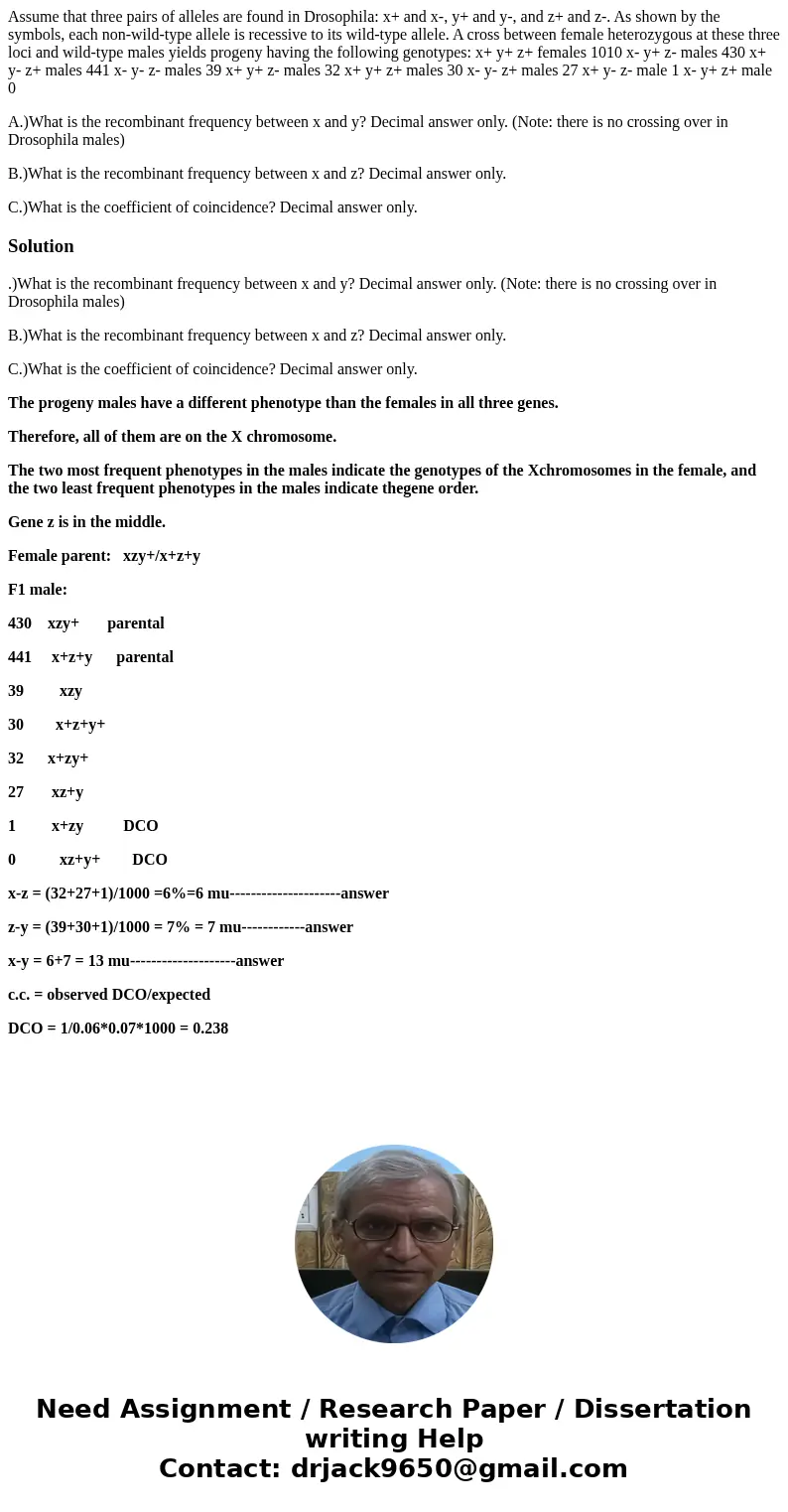Assume that three pairs of alleles are found in Drosophila x
Assume that three pairs of alleles are found in Drosophila: x+ and x-, y+ and y-, and z+ and z-. As shown by the symbols, each non-wild-type allele is recessive to its wild-type allele. A cross between female heterozygous at these three loci and wild-type males yields progeny having the following genotypes: x+ y+ z+ females 1010 x- y+ z- males 430 x+ y- z+ males 441 x- y- z- males 39 x+ y+ z- males 32 x+ y+ z+ males 30 x- y- z+ males 27 x+ y- z- male 1 x- y+ z+ male 0
A.)What is the recombinant frequency between x and y? Decimal answer only. (Note: there is no crossing over in Drosophila males)
B.)What is the recombinant frequency between x and z? Decimal answer only.
C.)What is the coefficient of coincidence? Decimal answer only.
Solution
.)What is the recombinant frequency between x and y? Decimal answer only. (Note: there is no crossing over in Drosophila males)
B.)What is the recombinant frequency between x and z? Decimal answer only.
C.)What is the coefficient of coincidence? Decimal answer only.
The progeny males have a different phenotype than the females in all three genes.
Therefore, all of them are on the X chromosome.
The two most frequent phenotypes in the males indicate the genotypes of the Xchromosomes in the female, and the two least frequent phenotypes in the males indicate thegene order.
Gene z is in the middle.
Female parent: xzy+/x+z+y
F1 male:
430 xzy+ parental
441 x+z+y parental
39 xzy
30 x+z+y+
32 x+zy+
27 xz+y
1 x+zy DCO
0 xz+y+ DCO
x-z = (32+27+1)/1000 =6%=6 mu---------------------answer
z-y = (39+30+1)/1000 = 7% = 7 mu------------answer
x-y = 6+7 = 13 mu--------------------answer
c.c. = observed DCO/expected
DCO = 1/0.06*0.07*1000 = 0.238

 Homework Sourse
Homework Sourse